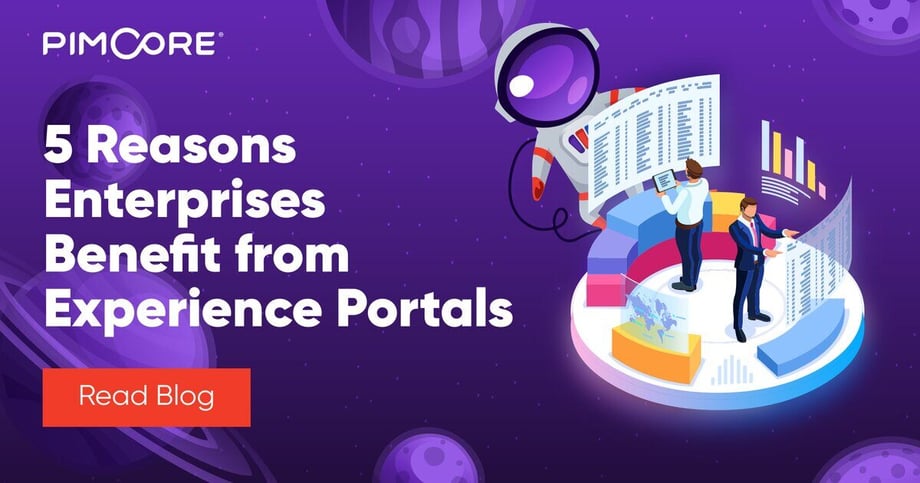
Product experience portals have turned into a powerful means for enterprises to empower customers and forge personalized relations.
Even though the phenomenon cuts across industries, at least for manufacturers and retailers, business isn’t just “transactional” anymore. Instead, it has reached a point where customer empowerment has become synonymous with customer experience, and retention and loyalty are all about the flexibility and convenience customers can enjoy.
For most enterprises, this means providing fulfillment through self-service, where customers get access to everything on any media and any channel. And one of the ways to offer self-service is through creating experience portals. Experience portals provide a single point of access where every piece of information pertaining to the customer is unified, organized, communicated, and presented to them in a secure environment. As all customers get their own dashboards, it is a way of personalizing relations with a large number of them at once.
And especially when it comes to products, experience portals are considered to be one of the best ways to ward off complications and offer a flawless, integrated, 360-degree experience. This article looks at some of the chief benefits of product experience portals.
1. Managing From a Single Pane of Glass
Enterprises have several external partners from whom they receive a variety of product items in the form of raw materials or finished commodities. A product experience portal offers these external suppliers and vendors the best possible multichannel product management experience. Products can be administered from a single point of control. This way, enterprises can keep up with external partners’ preferences of using any mode or channel of interaction they like. At the same time, the enterprises and the external partners get to use the highest quality, real-time product data and perceive it for what it is (i.e., no two versions of the information exist). Besides, the product data is organized flexibly, offering the right amount of scalability and engagement.
2. Perks of Personalized User Experience
Personalization cannot be achieved until not only every user gets their own portal but also gets the flexibility to customize the elements of the portal according to their unique usage. With product experience portals, users get precisely that; it includes specialized requirements regarding features, categories, navigation flow, etc. As a result, users can steer the data effectively and make informed decisions quickly. Users also receive high-quality information about their product history, personalized statistics, and forecasts. This can help them develop failsafe plans, concentrate on achieving specific objectives, aim for better collaboration, look for specific information, and make enhancements in existing processes easier. Therefore, a product experience portal ensures that suppliers always have access to their preferences.
3. Lowest Time-to-market Guaranteed
Product experience portals help enterprises collaborate better with suppliers and vendors by quickly achieving accuracy and consistency in information, thereby setting a solid foundation for the product launch process to go smoothly. It helps accelerate enterprise activities and avoids unwanted back-and-forth of product information between departments. In other words, due to the portal, neither the vendors and suppliers, nor the enterprise wastes any of their valuable time manually sharing product information (over spreadsheets or emails), minimizing delays and shortening the time-to-market. Besides, product experience portals ensure that every function needed to be kept in the workflow loop for products to reach the market faster gets handed down the one true version of the product data.
4. Business Intelligence that Won’t Disappoint
An immense amount of product data goes in and out of the Portals; communication gets tracked at every step, and every piece of data is recorded. This data comes from a vast variety of sources, applications, software, and systems. It contains swathes of product information, including the tiniest product details, making it an unparalleled source to glean insights from. As a result, an array of web-based reports and documents can be culled out and curated using this data. Any instance that could cause a potential worry (in the future) can be easily spotted and addressed much in advance.
Without a doubt, these reports are highly reliable and effective as they are rooted in facts that are acknowledged by every party involved.
5. Self-service—the Winner
In the end, what wins the game for experience ports is what it is meant to do in the first place, offer great “experience” through self-service. The agility, accountability, and authority it provides is the real cause of empowerment for portal users. It means that any activity pertaining to change management, claims processing, making requests, registering queries, escalations, etc., has predefined automated protocols and decision rules. This not only helps users to make changes and share updates at their own convenience but frees up their valuable time for strategic initiatives. Moreover, self-service reduces dependencies, enabling collaboration across time zones, thereby promoting satisfaction and bonhomie among team members.
Wrapping Up: Let Portals Do their Magic
A portal stands in contrast with best-of-breed applications working together, as no matter how good the experience they provide separately, it remains siloed and hence poses challenges to customers in receiving consistent information and updates.
Also, rather than considering experience portals as an inter-departmental phenomenon, they must be perceived from an enterprise-wide context. The chief reasons for Portals’ existence are to streamline business workflows, increase efficiency, and improve employee satisfaction.
Experience portals also promote high-degree transparency, task innovation, and out-of-the-box strategies that aid in improving business processes and smoothening internal and external collaboration.
However, to make experience portals work best toward businesses’ advantage, enterprises must direct their efforts towards training and involving employee to achieve maximum acceptability of experience portals across departments. Building a positive perception of portals can go a long way in having them deliver their intended benefits.
Want to know the features & benefits of Pimcore PIM platform and how they meet your business requirements? Schedule a FREE demo with Pimcore consultants.
.png?width=520&height=294&name=Blog%20Header%20Template%20Nov%202024%20(1).png)


